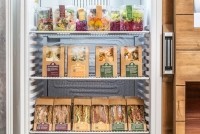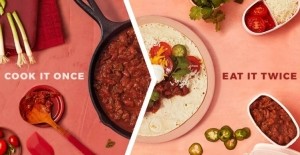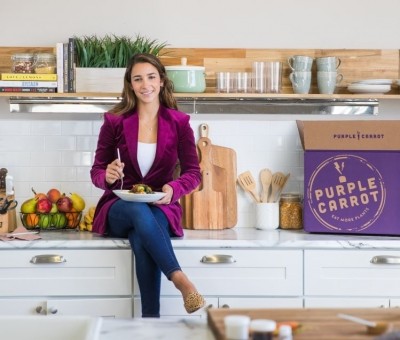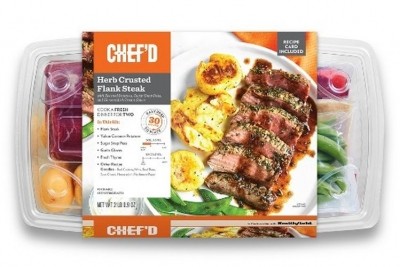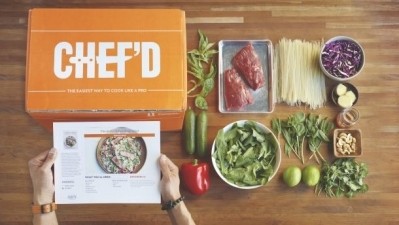Adapt or die? Flexibility and agility key to success in the nascent meal kit market, says HelloFresh North America president
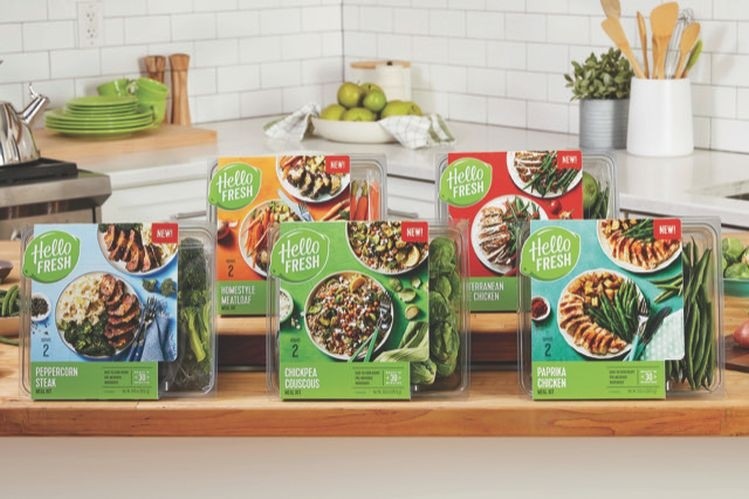
Not surprisingly, HelloFresh’s North American president Tobias Hartmann - a former eBay executive who joined the German meal kit firm in August – makes the case for the former.
There’s still a huge growth opportunity for the subscription model, he told FoodNavigator-USA, but “there are some consumers that just don’t like to plan ahead,” and retail kits meet their needs.
Fresh prepared food vending machines, meanwhile, cater for people in offices without a ton of fresh food options nearby, and given HelloFresh’s brand equity, it makes sense for the company to play in multiple spaces, he said.
“There are consumers out there that don’t want to sign up to any subscription plan – it’s the word ‘plan’ – they don’t want to plan ahead in this way, so the retail kits are great for the significant number of households that still don’t know what to have for dinner by 4pm."
Retail meal kits: 'A very logical and complimentary step for HelloFresh'
He added: “Our core business at HelloFresh is subscription, and you only have to look at our growth rates – we grew 50% in the US in Q1 on top of really significant growth last year and served 27 million meals – to see we are growing that core business, and we have very loyal customers that we keep engaged by helping them discover new things. But given our brand equity and coverage in the US, this [move into retail meal kits] is a very logical and complimentary step for HelloFresh.
“Grocers needed to profitably replace underperforming or low margin product categories and meet their customer demands for chef-curated, fresh and convenient meals. Our retail line reduces the pressure on grocers to create these meals themselves and easily integrates into growing areas of their business such as online grocery and delivery.
“We’re testing the meals in different locations in Giant and Stop & Shop stores [there are 5 SKUS priced 14.99-$19.99, serving two, with 14 days of shelf life]. In a small store it’s best to be in a central location but at a larger store you want to catch people at the entrance [eg. Stop & Shop is stocking them in the deli section], but we’re working closely with our partners to find out what works.”
More retailers will be added throughout the year, including smaller format retail chains looking to revamp their ‘grab & go’ offer, said Hartmann.
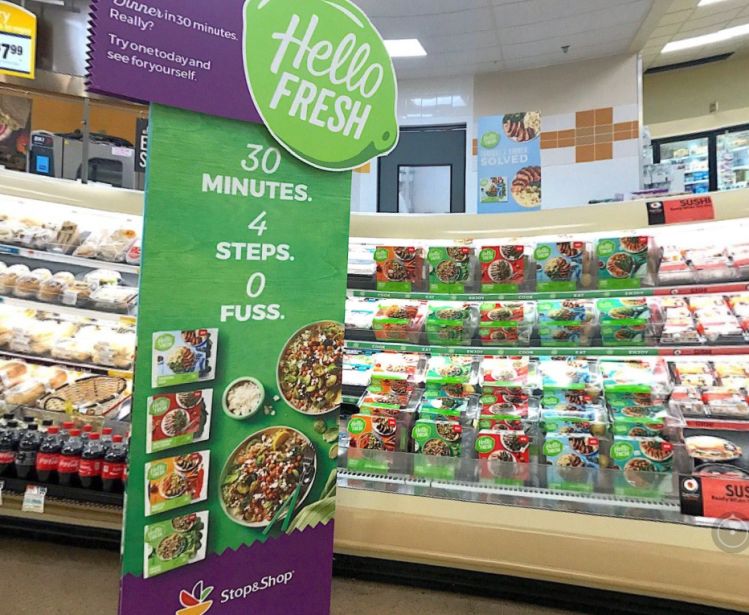
HelloFresh – the world’s largest meal kit company - was founded in Berlin in late 2011 and went public in 2017 on the Frankfurt stock exchange. Average order value in the US in Q1, 2018, was 53 euros in constant currency (c.$61), while at rival Blue Apron, customers spent an average of $57 in Q1.
HelloFresh - which has 11 fulfilment centers in the US - has 1.88m active customers globally and 1.21m customers in the US (Q1, 2018 data), while Blue Apron SEC filings shows it had 786,000 customers in Q1, 2018, vs 1m+ in Q1 2017 as it cut marketing spend while it dealt with operational challenges.
Adapt or die
The key to success in the meal kit market – which has witnessed some rapid consolidation in recent months, with Albertsons acquiring Plated, Kroger acquiring Home Chef, and HelloFresh acquiring Green Chef – is flexibility, added Hartmann.
“You need a strong brand that consumers trust, but you also have to be able to innovate quickly. This is a very nascent industry, so you have to have flexibility and agility through every part of your business from supply chain and procurement to menu selection.”
You also have to have the capability to turn data into insights, he said: “Everyone in this industry collects a lot of data, but you have to be able to draw the right conclusions from your data and turn that into more personalized options for your customers. We have a really robust data cluster that tells us by meal by season, by customer segment what the key trends are.”
He added: “For example, we found out that there’s a subset of our customers that would like to see what we call one time effort and two times usage, so we launched a ‘dinner to lunch’ product line in May [featuring 2-in-1 recipes such as a beef chorizo chili over rice for dinner with enough left over to be used in burritos – with a few bonus ingredients, for lunch the next day].
“We’ve also developed 20 minute meal solutions, one pan recipe solutions, and meal plans for people with dietary restrictions based on customer feedback.”
*HelloFresh posted a 50% increase in US revenues to $180m euros (c.$209m) in the first quarter, edging ahead of Blue Apron, which posted a 20% YoY drop in Q1 revenues to $196.7m.
Is the future rosy for meal kits?
Yes, but only if they explore new business models, argues former Chef’d executive Sean Butler, who predicts that “subscriptions are going away."
In a recent post on linkedin, he asked: “Would consumers rather commit to a $60 purchase with a 7-day lead time and limited meal choices, or choose from dozens of options the same day they’ll eat? In 12 months, anyone who isn’t delivering meals same-day with voice activation will be gone. This will require new partnerships with retailers, emerging last-mile deliverers, and a new localized 3PL model (restaurants)."
Meals must also be available as ready-to-cook, heat & eat, and ready- to-eat, he argued: “Some days consumers want to cook for 15 minutes, other days they want to cook from scratch, and sometimes they need a fresh product they can heat up quickly, while other days they need food delivered, ready to eat. Restaurants, grocery stores, delivery services, meal kits - over time they will all become meal companies or they will die.”
